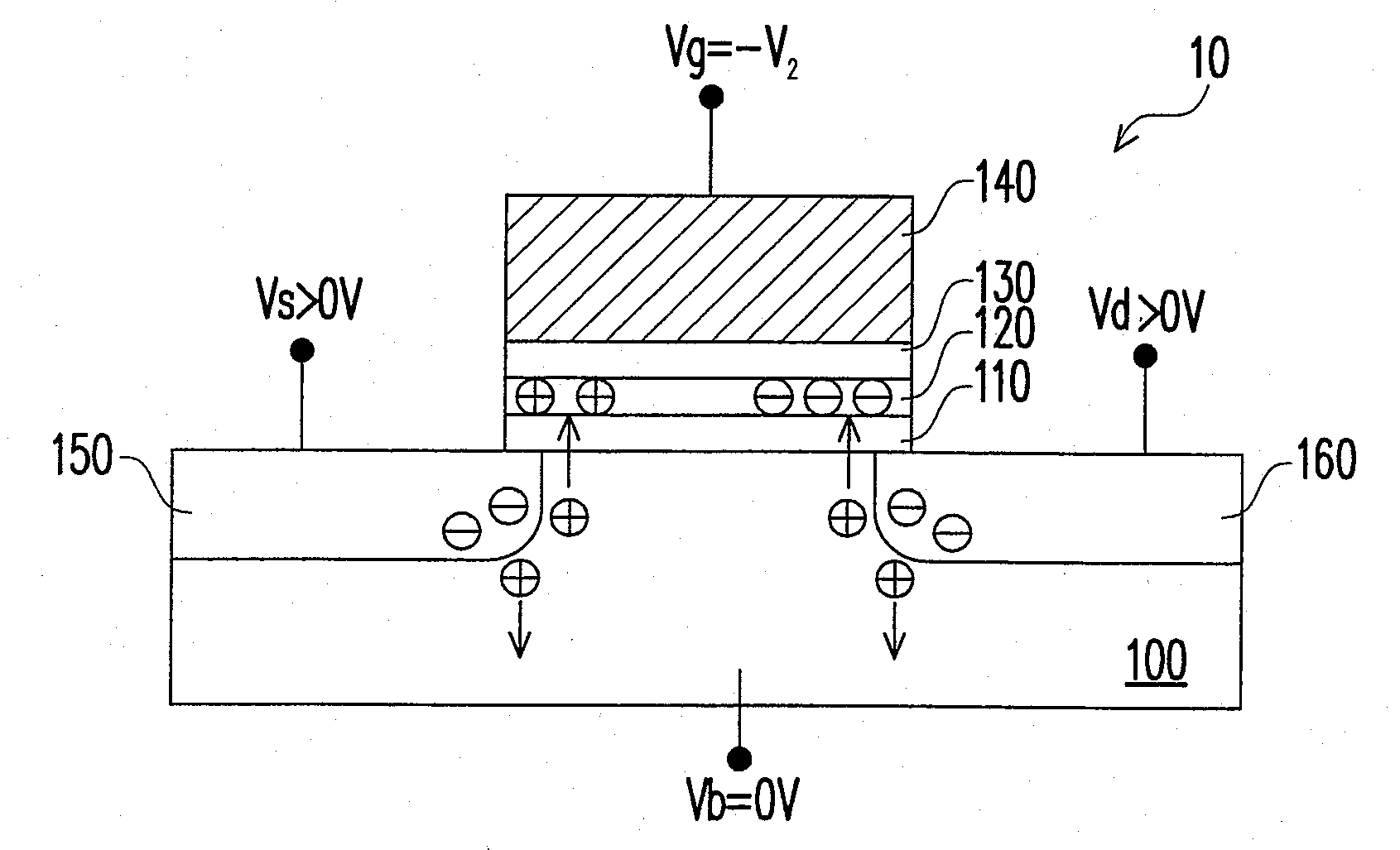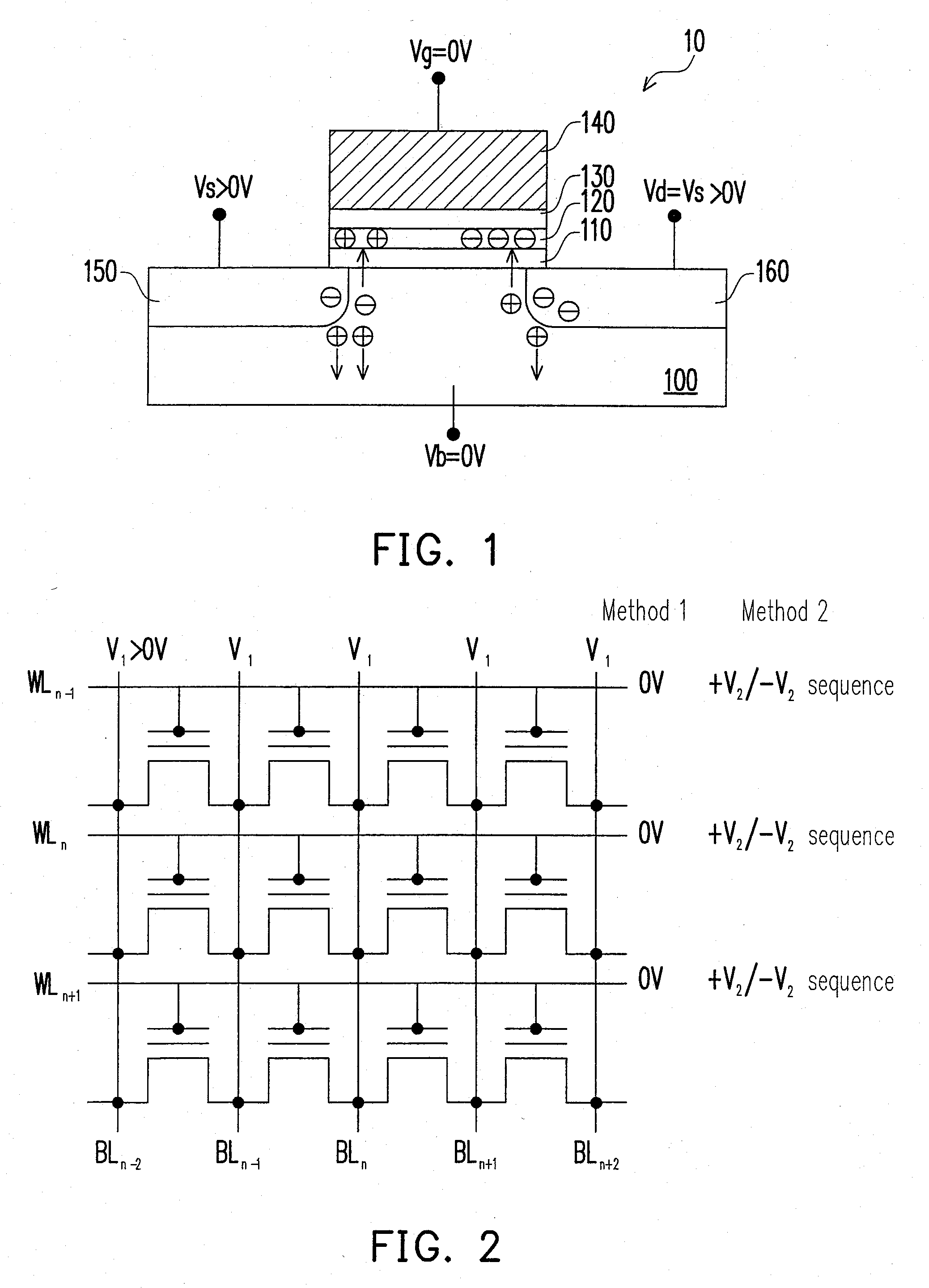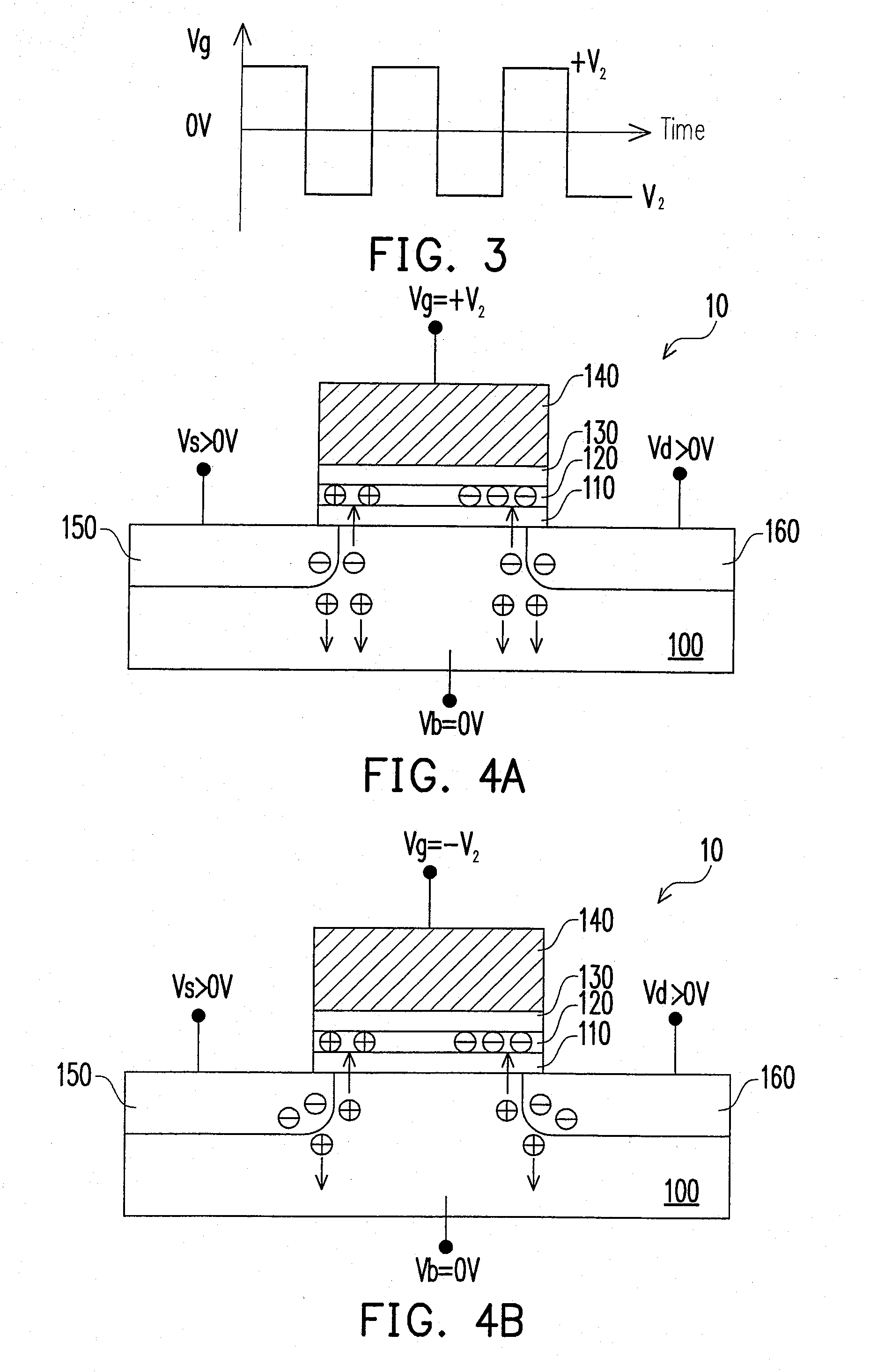Non-volatile memory
a non-volatile memory and memory chip technology, applied in static storage, digital storage, instruments, etc., can solve the problems of data leakage, overly high threshold voltage, and reading/writing errors that tend to occur in subsequent use of non-volatile memory devices, so as to reduce the possibility of data writing/reading errors
- Summary
- Abstract
- Description
- Claims
- Application Information
AI Technical Summary
Benefits of technology
Problems solved by technology
Method used
Image
Examples
second embodiment
[0025]Furthermore, though the non-volatile memory described in the following embodiments is directed to electrons being removed from the charge-storing layer in an erasing operation, a non-volatile memory apparatus that injects electrons for erasing can also be reset according to the first or this invention.
[0026]FIG. 1 shows the voltages applied to different parts of an exemplary memory cell and the resulting effect in the reset method according to the first exemplary embodiment of this invention. The memory cell 10 includes a portion of a P-substrate 100, a bottom oxide layer 110, a nitride layer 120 as a charge-trapping layer, a top oxide layer 130 and a control gate 140 sequentially stacked on the portion of the substrate 100, and an N-type source region 150 and an N-type drain 160 in the substrate 100 beside the control gate 140. The memory cell 10 may have only one data storage region that is the entire region under the control gate 140 or have two data storage regions adjacen...
first embodiment
[0031]Besides, it is understood from the above that in a non-volatile memory having only one data storage region in each memory cell, the cells in the over-erased state, in the high-Vt state(s) and in the normally erased state can also have similar threshold voltages according to this invention.
[0032]In FIG. 2, the non-volatile memory is represented by a circuit diagram has a virtual ground array structure. In this example, the substrate and all of the word lines (WL) coupled to the control gates are applied with 0V, and all of the bit lines (BL) coupled to the S / D regions are applied with a voltage V1 that is higher than 0V and is sufficiently high, possibly ranging from 5V to 7V, to cause band-to-band tunneling hot holes. The resulting effect in each memory cell has been described above.
[0033]FIGS. 3, 4A and 4B depict a non-volatile memory and a reset method of the non-volatile memory according to the second embodiment of this invention, wherein the non-volatile memory is reset to...
PUM
 Login to View More
Login to View More Abstract
Description
Claims
Application Information
 Login to View More
Login to View More - R&D
- Intellectual Property
- Life Sciences
- Materials
- Tech Scout
- Unparalleled Data Quality
- Higher Quality Content
- 60% Fewer Hallucinations
Browse by: Latest US Patents, China's latest patents, Technical Efficacy Thesaurus, Application Domain, Technology Topic, Popular Technical Reports.
© 2025 PatSnap. All rights reserved.Legal|Privacy policy|Modern Slavery Act Transparency Statement|Sitemap|About US| Contact US: help@patsnap.com



